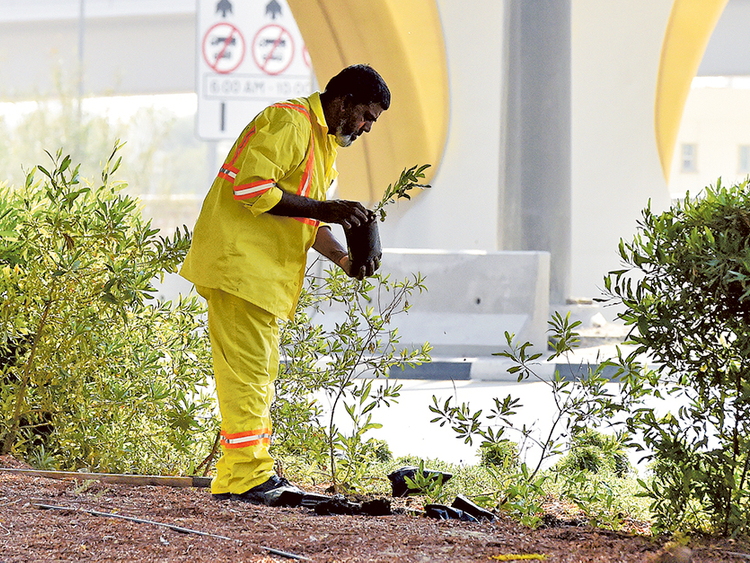
Dubai: The city is all set to bloom with more than 37 million flowers after Dubai Municipality’s exhaustive efforts to beautify the city’s highways and byways.
Mohammad Abdul Rahman Al Awadhi, head of the agriculture section at the Public Parks and Horticulture Department at Dubai Municipality, told Gulf News that the unit of over 1,700 workers is responsible for the planting and maintenance of flowers during three phases of the year.
“The main times of the year when the flowers are planted in batches are from September to October, then January to February and, finally, from May to June. “We are now in the first season of planting, and the most common type of flowers you will see in the city are petunias. Our gardeners are now replacing the older ones, as well as planting in new areas too,” said Al Awadhi.
As of October, the agriculture section recorded the planting of 37,131,806 flowers, which is expected to exceed previous statistics by the year’s end. In 2013, authorities planted as many as 38,168,486 flowers, which increased to 38,433,573 in 2014.
There are currently four municipal nurseries where flowers and trees are planted, watered and checked for bugs, before the greenery is then carried off in lorries and distributed to eight of the city’s parks, including beach parks and pond parks, in addition to roundabouts, streets and across road dividers.
“All the flowers and trees are grown right here in our nurseries, and they are either native to this country or their seeds were imported. There are also flowers that bloom in different seasons as well as permanent flowers that live for one or two years, and for each season, different types of flowers are planted,” he said.
Dubai Municipality has not spared any expense in maintaining and expanding its beautification projects despite the city receiving an average of 67 millimetres of rainfall annually. According to the UN’s Food and Agriculture Organisation, residents in the UAE also significantly consume more water than the global average, estimated at 550 litres per person per day compared to 125 litres on a global national average.
“The top three countries where the municipality imports its flower seeds are from Italy, USA and Japan,” said Al Awadhi, while pointing out that a few of the flowers used for each season include portulaca and vinca that are planted in May, the zinnia and tagetes in July, and petunia and alyssum in September.
The portulaca grandiflora is one of the most common plants found in gardens, and is also known in India as the 9 o’clock flower as it tends to bloom in the mornings at around 9am. Like other cultivated flowers, the portulaca is grown in an assortment of colours — red, orange, pink, white, and yellow — used to landscape the city amid the modern skyscrapers and bustling roads over approximately 200 hectares.
Al Awadhi pointed out that nearly 27 million seedlings were planted around buildings and junctions, as well as over 750,000 seedlings for patching works.
In the last few years alone, Dubai Municipality has extended its efforts to park projects at Al Quoz, Al Muhaisnah, Al Barsha 1, 2 and 3, and neighbourhood parks in Al Garhoud “in addition to some communities that belong to Mohammad Bin Rashid Housing Programme”, he said.













